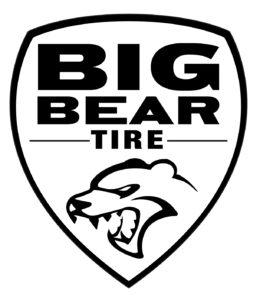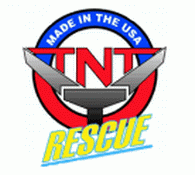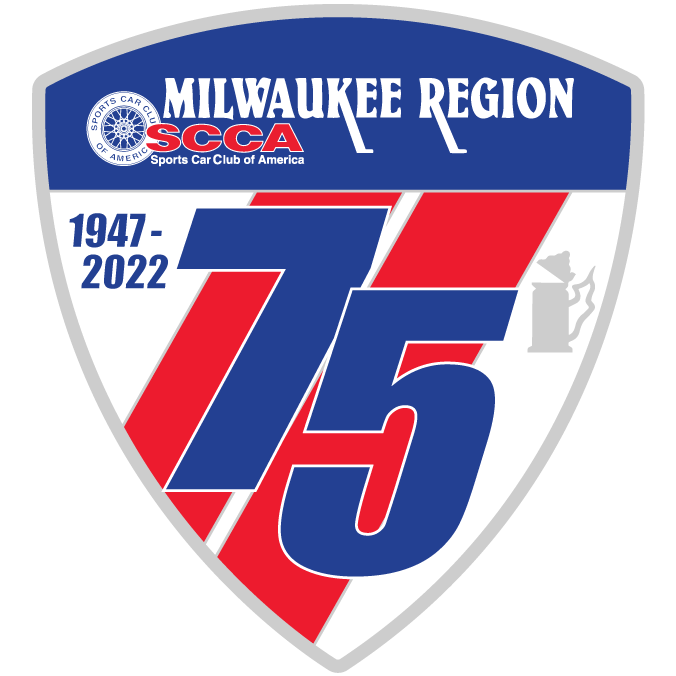How Do I Volunteer at Road Races?
 It takes many volunteer workers (also know as “worker specialties”) to staff a race weekend. The night before the event Registration, Technical Inspection, and Stewards are busy checking in drivers and workers, inspecting race cars, and answering questions. On race days everyone is needed including Course Marshals, Flagging and Communications (Corners), Grid, Pit Marshals, Emergency Services, Sound Control, Starters, and Timing and Scoring.
It takes many volunteer workers (also know as “worker specialties”) to staff a race weekend. The night before the event Registration, Technical Inspection, and Stewards are busy checking in drivers and workers, inspecting race cars, and answering questions. On race days everyone is needed including Course Marshals, Flagging and Communications (Corners), Grid, Pit Marshals, Emergency Services, Sound Control, Starters, and Timing and Scoring.
Road Racing wouldn’t exist without the commitment and professionalism of the various worker specialties. These volunteers really run the show by getting up close and personal with the drivers and cars. They’ve also been known to have a bit of fun at the end of the day. To become a volunteer worker look over the list below and then go to the Region Contact page to find the Regional Administrator for that specialty. We’re always looking to add to the crew. Join the SCCA to get started, then be sure to check our Worker Rewards Program!
The Course Marshals maintain and deliver equipment to the corners and provide equipment and course support as needed during an event.
Flagging and Communications (F&C) volunteers are the workers standing out on the corners of the track, close to the action. They communicate track conditions to the drivers and race stewards. There are usually forty or more people to staff each race.
The F&C workers are responsible for the safety of the drivers while they are racing. They alert drivers to possible dangers by displaying different flags as the drivers approach their corner. They will signal with a blue flag to inform a driver that a racecar is approaching. A yellow flag will be displayed to indicate that there is a dangerous condition ahead and the drivers should slow down and not pass.
When an accident or emergency situation occurs the F&C workers are the first people on the scene. Each corner station is in radio communications with other corners and central control. The communicator keeps central control apprised of all situations at the corner station, improper driving and malfunctioning racecars.
If you enjoy being close to the race action, are a safety minded person and like being outdoors (no matter what the weather) you should consider Flagging and Communications as a specialty. You can be on a corner your very first race day. We will provide closely supervised training by experienced volunteers.
Pit Marshals are the guys wearing green shirts and white pants and orange gloves. They are responsible for the control of activities on pit lane. Which includes control of drivers and crews and all personnel on pit lane. Pit marshals make sure that the personnel on pit lane are safe as race cars are coming in for pit stops.
Pit marshals are responsible for fire control and giving assistance when incidents occur. They make sure that its safe for the race cars to leave their pit box as others cars are inbound. Pit marshals use radios to communicate with race control and also hand signals when in situations when the radio is not working. They also work with all stewards and safety personnel including the grid when needed.
In Registration we are the first contact with most participants and Officials.
As a registrar, you’re responsible for checking credentials, verifying that they are current, having a waiver signed or recording that they have a valid annual waiver, providing the appropriate credentials for the event, and whatever paperwork is appropriate.*
Registrars sign everybody in, so if you like working with people, this is the specialty for you. Registration is in a building so you are out of the elements. We also have spots to sit for people that cannot stand for long periods. Drinks and snacks are available and we have been known to play a quick game of Yatzee during the slow times. You may work in Registration in the morning and elsewhere in the afternoon.
We do on the job training, so come and give Registration a try!
* Taken from the SCCA Club Racing Specialty Operations Manual for Registration.
Mission Statement: To help ensure the viability of the racing venue by controlling the sound emission levels to those acceptable to the neighboring public.
Mission Statement: To help ensure the viability of the racing venue by controlling the sound emission levels to those acceptable to the neighboring public.
The Purpose of Sound Control: The purpose of Sound Control is to provide the means for all competitors and officials to ensure the compliance of all vehicles to the sound emission standards in effect for the event.
- The Sound Team will monitor, record, and report all sound readings on all cars.
- The Chief Steward will be advised of all readings.
- All readings will be posted at designated locations for competitors review.
- Post race reports will be submitted to the Chairman of the SOM.
Sound Control Licenses: There are three levels for Sound Control License (Regional, Divisional and National). For purpose of obtaining a basic license we will address the Regional License. The Regional Sound Control license should be issued to any SCCA member that expresses an interest in the discipline and desire to learn and work the specialty.
Sound Control Volunteer Tasks:
- Reader: As cars approach the Sound Control station, the Reader shall determine if the first car is sufficiently separated from nearby cars so that the sound reading will be valid. If the cars are too close together, each individual car's level will contaminate the reading for the other. The Reader will communicate the reading level to the Recorder by first giving the car number followed by the decibel level. Example: "car four two", "reading of nine eight".
- Recorder: The Recorder will start each session by filling out the required information on the Official Sound Report Log. During the session, he/she shall record the sound levels of the cars being measured as relayed by the Reader. A target of 3 to 5 readings should suffice; with more readings being required for questionably loud cars.
Sound Control Chief: The Chief of Sound for the event shall ensure that the equipment is set up properly each day prior to cars on track and that the sound equipment is initially field calibrated each day. Subsequent calibrations are to be performed approximately every 4 hours. He/she shall ensure that copies of the sound sheets are posted for the competitor review as soon as practical after each session and that the Chief Steward is advised of the readings. The Chief shall ensure that sound level violations are reported to Race Control using proper radio protocol. He/she shall ensure that all equipment is returned and secured at the conclusion of the event.
Personal Equipment: Personal equipment will be varied as the volunteers operating the Sound Control station and different tracks will present different issues. Some Sound Control stations will be accessible to the entire facility while the track is hot. Others will require the volunteers to access the restroom facilities, food concessions and their personal belongings only during breaks in the schedule. Some locations will accommodate parking personal cars right at the Sound Control site. Others will require remote parking and a shuttle to the site. Things like rain gear, food and drink, medications, sunscreen, cold weather clothing, sun glasses, folding chairs etc. need to be taken into consideration before manning the station.
Sound Control is a vital specialty to the overall operation of an event. It is a specialty that can be learned over a race weekend and an excellent way to gain knowledge about another specialty in the total dynamics of what it takes to run a race event.
Please, come join us, won't you!!!
It is the Starter who waves the green flag signaling to the driver the race has started, and it doesn’t end until the checkered flag is waved. This makes the starter the most visible person on the racetrack during a race, but there is more to the job; starters are very busy people with many other jobs. This specialty has only a few rules but requires a great deal of experience to make them work, and work properly.
A Starter should possess the desire and eagerness to learn. Some of the qualities needed are:
- Multi-tasked oriented—the ability to perform and react to many situations that might occur simultaneously.
- Be self-directed and focused on the task at hand especially in difficult situations.
- Can remain focused and separated from numerous situations that may be happening at the same time.
Previous race experience as a Corner Worker, competition driver may be helpful but not necessary.
The Starter conveys information to the drivers about track conditions and incidents, as well as information from the Chief Steward. Most information has to do with the condition of the course and the safety of drivers. This information is conveyed through flags and gestures, as prescribed by the GCR relating to starting, suspending and ending a race. The meaning of flags is easy, when and how to use them takes some time and effort. The Starter should gain knowledge and insight into the characteristics of the different cars and drivers on the track at race speeds. This will help anticipate situations, which may potentially, affect safety on the course. Safety is a high priority in the Starters responsibilities.
The Starter controls the competing drivers by conveying to them during practice and competitions until the competition has concluded. It is the responsibility of the Starter to “start” the race. The starter, start stand is an area that is visible to the majority of the field, when the starter feels the cars are lined up correctly, according to the GCR, the starter waves the green flag and the race begins.
The Starter works closely with Timing and Scoring and the Chief Steward/Operating Steward when the actual time or number of completed laps have been reached the Starter waves the Checkered flag/flags.
As the Starter surveys the field prior to making the decision to start the event the primary concern is that of safety. The Starter prior to a race as a lot of things to think about, is the field lined up according to the GCR, is the speed appropriate and reasonable, is it safe to start the race and is the field lined up so everyone receives a fair start. It all boils down to safe, fair, and fun, we all need to have fun.
During an event the starters have a number of responsibilities divided among individuals.
- POINT STARTER – The person in charge of the race.
- BACKUP/COMMUNICATOR – Communications with race control, yellow flag (watching downstream for incidents) and assisting the point in flag selection and display. Displaying the number board for black flag situations.
- CHARTER - Logs the car numbers in sequence of order each lap and maintains the lap board display for the competitors. Responsible for maintaining the lap count to advise the backup and point of laps remaining.
- PIT OUT – Depending on the facility this is under starts responsibility. This is the area where the cars actually enter the course.
*Taken from the SCCA Club Racing Specialty Operations Manual R2007
Timing & Scoring is one of the most challenging of specialties, responsible for determining lap times and track position. You have to actually see the T&S workers in action to realize all that they do tracking a race in progress.
The Numbers Game
This is a brief overview of what Timing and Scoring does and the various jobs available in T&S
- Timing: how fast a car goes around the track, used to determine the starting positions for a race (also know as the starting grid).
- Scoring: what position each driver finishes in, used to determine the final results of a race.
- Timing & Scoring: the road racing specialty that is responsible for determining the final results of a race weekend.
Also known as T&S, we have a small, but precise crew who all have a little different view of an event than the other specialties. We look at the finish line and watch each car as it passes by, determining exactly what car is in what position for each lap. Sounds easy, right? Imagine a pack of 15 Formula Vees that are all within 4 seconds of each other - or maybe there were 16 cars in there.
Just how many *were* next to each other at the line? No time to think, here comes the next pack. So, just turn off your brain, watch the numbers, write them down without thinking about it and keep the pencil (or pen) on the paper. Sometimes it helps to chat with the folks around you to occupy your mind and just keep writing.
Not your idea of having fun? How about trying to *read* the numbers the people wrote down while those packs went by, comparing the different lists that 3 or 5 people wrote down, and see if they agree on what they saw?
No, not for you? There’s always the primary and backup computers that monitor and record the signals from the transponder system. We use the MyLaps Orbits timing software to time the cars and record the laps completed. I thought I saw car number 30 just go past the line, so why did the computer indicate that the car number was number 3? The system operators need to watch the cars and the computers to make sure that they have the correct information and also that each car that goes past gets registered.
Don't have your attention yet? Ever keep a lap chart for 45 cars for a 15 lap race, when various classes are running on 4 or 5 different laps at the same time? Which side is wrong when the lap chart doesn’t match the results from the timing software?
Still not for you? Then, there's the mysterious "back room", (insert spooky music here) where all the work that went on during the race is carefully checked, the final grids and race results are compared, penalties are assessed as per the Chief Steward, and the results are finally printed. After posting provisional Grids & results start the 30 minute clock - that's how long before the results can be considered "final".
How about a nice walk through the paddock? T&S can always use 1 or 2 people to make copies and take grids and results to the posting area to distribute to the eagerly waiting drivers. When we are short staffed (usually), we rely on the assistant Race Chairmen to help out with this. Swearing at the jammed copy machine is optional - fixing it is not :-).
Between sessions we chat, munch, bench race, and get ready for the next group. We're usually dry when it rains, and are always ready to welcome new workers, even if it's just for a day to see what we are all about. We can use extra hands before the first session to bring in all of our equipment & set it up, and again after the final checkered flag to pack it all up again. We also need help keeping all of the hardware in working order. There is software to upgrade, cables to repair, and gremlins to chase.
Stop in at any road race, or call one of the specialty chiefs if you are interested in finding out more.





